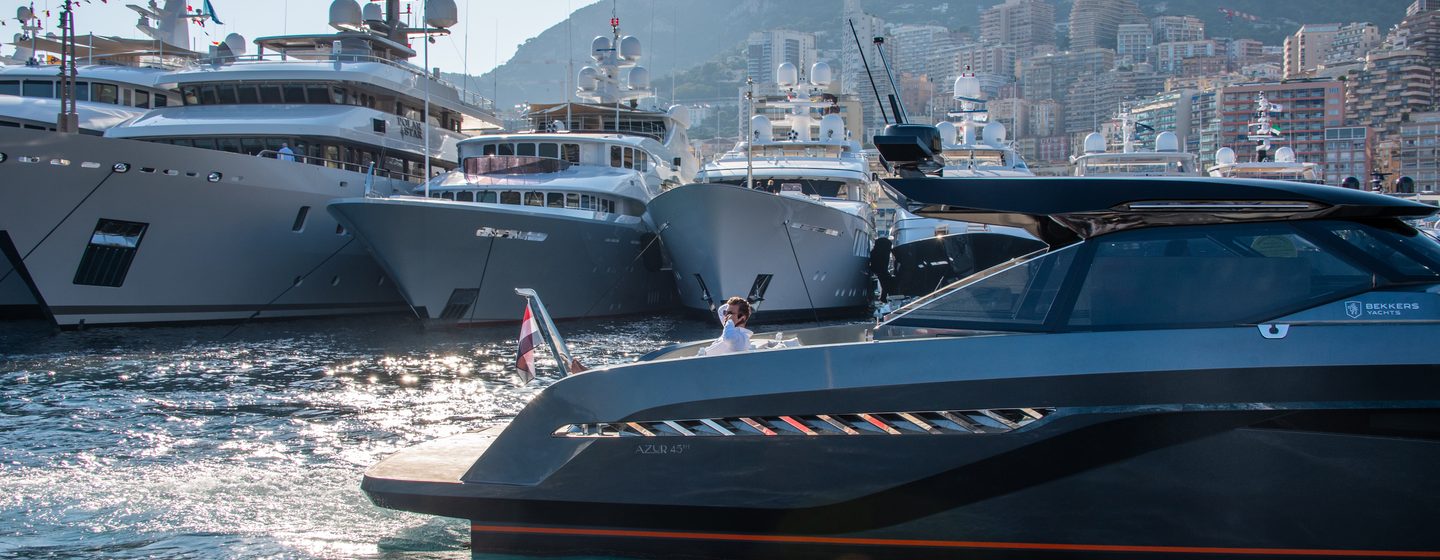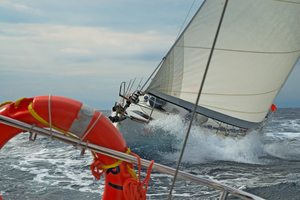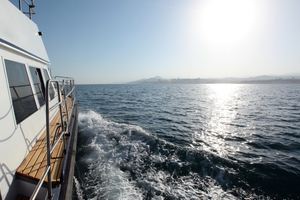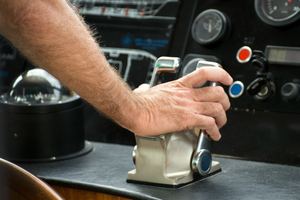Good seamanship relies on common sense, effective communication, and skill, all of which are essential for a successful and enjoyable time afloat. This article covers the pre-departure considerations up to leaving the shelter of the harbor.
Communication is Key
Effective yacht handling depends not only on being skilled at the helm but also on calm and articulate communication. While the saying 'the captain's word is law' may have evolved into novelty brass plaques, its essence remains relevant. A yacht can only have one captain, and it's their responsibility to convey the plan and expectations to the crew.
The stereotypical image of a stressed, shouting skipper often arises from poor planning and communication rather than inadequate skills.
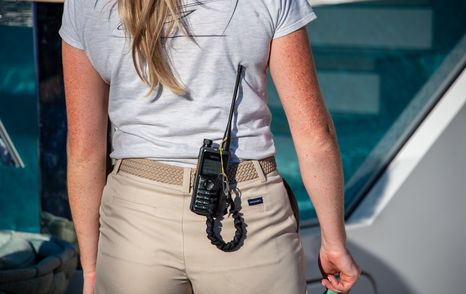
To ensure smooth sailing, prioritise the fundamentals: plan your actions and communicate them clearly to the crew. Preparation does prevent poor performance after all.
Weather and Tide
Prior to releasing lines, it’s important to assess the local weather and sea conditions. Even if you've reviewed the latest weather report, take a moment to check the current local wind direction and strength, as conditions can be unpredictable. Consider the longer term weather forecast for the intended passage. If you plan to be away overnight and there’s a forecast of increasing winds, ensure you have a plan for seeking shelter in case of a strong wind warning escalating to a gale.
Is it safe, or prudent, to embark on the voyage at all?

In tidal regions, the presence of a strong tidal stream can become apparent as soon as you leave your berth. Understanding the force and direction of both the wind and tidal current is critical for anticipating and compensating for their effects. It may be prudent to ‘slip’ a longer mooring line on the windward or tidal stream side under control rather than letting it go completely.
While a flybridge provides an excellent vantage point to assess conditions, the enclosed space of an internal helm provides fewer insights. Always plan for a worst-case scenario and hope it won't be necessary. If crew numbers permit, strategically placing someone with a ‘roving fender’ can often save the day!
Passage Tracking
Your decision is made, and the weather is favorable, so what's next on the pre-departure list?
Letting someone know when you're leaving and where you're heading is a passage preparation essential.
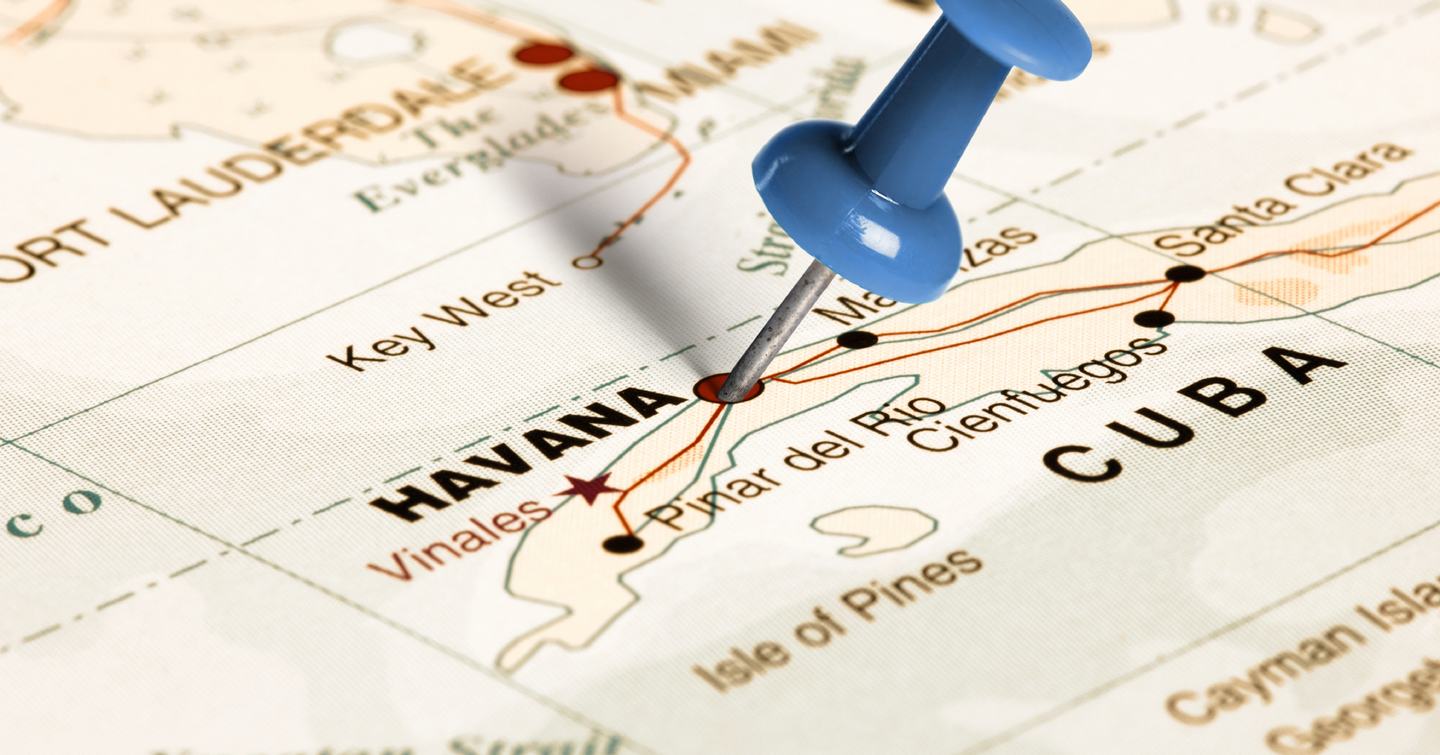
The Royal Yachting Association (RYA) of the UK provides a SafeTrx service. This app-based service allows users to create and share their voyage plans, providing real-time tracking and emergency alerts to designated contacts and maritime authorities. SafeTrx is available not only in the UK but also in several European countries.
There are similar services and apps in other cruising locations. SafetSea, for example, is a Swedish service that allows boaters to create voyage plans, share their routes with designated contacts, and send distress alerts in case of emergencies.
The United States Coast Guard (USCG) provides their Boating Safety Mobile App. This app offers features such as safety checklists, emergency contacts, and the ability to file a float plan. It also provides information on local weather, navigational rules, and safety regulations.
You've informed everyone else so now tell your crew! It is the most basic assumption that they'll know, but taking a moment to explain to your crew where you're heading and how long you think it will take, is all part and parcel of crew communication and good leadership, read on.
Tips for Clear Communication
Before leaving the port, take time to establish the crew's responsibilities. Determine who will handle tasks like managing bow and stern lines or fenders, and specify each crew member's station and communication method.
On shorthanded yachts with only two individuals, including the captain, it's essential to agree on line responsibilities. Typically, the crew will manage the bow line, while the skipper handles the stern line, given its proximity to the helm. However, yachts with side-deck access from the helm offer a quick route to the bow, making side doors a useful feature.
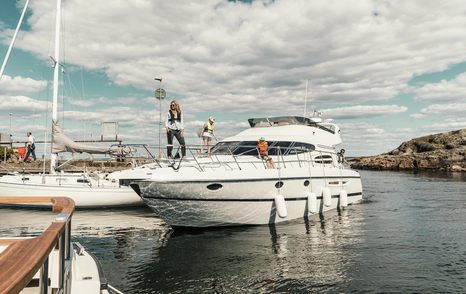
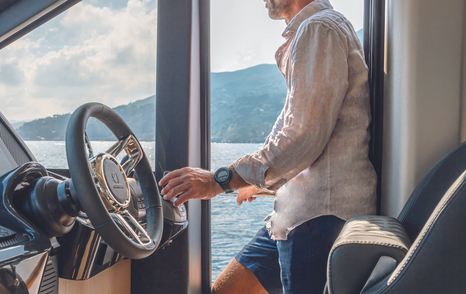
Agree on language: maintain a set of clear, easily understood words and phrases to confirm actions such as casting off or securing lines, engaging engines, or estimating the distance from the dockside or pontoon. Always use 'port' and 'starboard' instead of 'left' and 'right,' as the former remains consistent regardless of your orientation.
Thank everyone as the lines and fenders are stowed and you navigate out of the harbour. A simple 'thanks everyone, that went smoothly' can make a significant positive impact.
Establishing Effective Communication Among Yacht Crew
- A shout of ‘line clear’ confirms the line is clear from the shore, is safely on deck and not trailing in the water
- A shout of ‘bow secure’ or ‘stern secure’ can confirm a line has been made fast to the shore
- Use fingers to confirm distance in meters, 1, 2, 3, etc
- A raised fist commands the skipper to stop or hold position
Preparation to 'Let Go'
In advance of releasing the mooring lines, passage preparation includes tasks such as engine checks, filling water tanks, disconnecting shore power, checking hatches are closed, your crew is ready and the fridge is stocked.
Once you are confident in your readiness to cast off, conduct one last check to ensure there is no mooring debris entangled in the propeller. Additionally, consider the immediate surroundings, including the potential impact of your neighbour's bow line should the wind gust as you depart from your berth.

This pre-departure moment allows you to consider your imminent manoeuvre without any pressure.
Use this moment well.
Close Quarters
With the lines now clear and the yacht making way, slow and steady is the name of the game. In the close confines of a marina, avoid the use of excessive throttle as it may lead to a disruptive wash that can have adverse effects on your vessel. If a heavy hand on a side thruster causes a burst of water to rebound off the marina wall, it could potentially lead to inconvenient repercussions.
Fundamentally, boat handling in marinas requires precision and skill. Navigating through tight spaces and adapting to variables demands careful attention to detail and clear communication among the crew. It's a combination of experience, practice, a steady hand, and all hands on deck. Move the yacht slowly, not only to adhere to the speed limits and consideration of other vessels but hitting something at three knots does a great deal less damage than hitting something at ten knots.

Whilst manoeuvring out of a marina or harbour, always consider your escape route. Where is the open water in case your propeller gets fouled by debris? Can you quickly drop anchor if an engine fails? What's the plan if a crew member falls overboard while handling fenders? Preparedness is key, and having a clear escape route in mind buys you valuable time to respond effectively to unforeseen situations
While in the harbour, it's wise to keep the fenders outboard as a precaution, however, it’s a good idea to find a safe open space for fender stowage to be managed, before heading into open seas.
Throttle Control
Excessive throttle in close-quarter situations can escalate the pressure on the skipper, demanding quicker reactions. Too much power can lead to loss of control, create a dangerous wash, and increase the risk of accidents. Better to employ short bursts of throttle for steerage and direction, rather than prolonged, low-rev power.
In a worst-case scenario, adding power can worsen the situation. It's often wiser to briefly drift and assess the circumstances. Unless there's imminent danger, drifting into an object typically results in less damage compared to a collision under power.
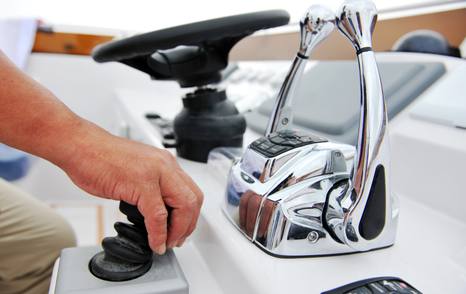
Walking with Twin Engines
If your yacht features twin engines, you can employ them for a technique called 'walking,' which allows you to rotate or maneuver the vessel with minimal forward or backward movement at slow speeds. Gentle nudges of power to each engine can help maintain the yacht's position, or slowly shift in the desired direction without excessive headway.
On shaft-drive yachts, this maneuver is straightforward with the helm and rudders kept straight-ahead, relying solely on engine power. However, sterndrive yachts require a degree of steerage to achieve the desired directional thrust. Once you're heading in the right direction, you can apply power and steer as needed for precise control.
Yacht Behavior
The tapered shape of a yacht creates a natural reaction to the wind, whereby the bow will swing away, leaving the stern to face or ‘comes up into’ the wind. This may sound a little disconcerting but the reliability of this reaction to wind is such that it can be used in the skipper’s favour.
When manoeuvring at close quarters, check to see if the direction of the wind allows clear passage astern, if so, you can use the elements to smoothly position the yacht.

You can, of course, choose to override this wind-induced characteristic, using engines and thrusters to overcome it, but it is always worth knowing how your yacht will react.
Slow Speed Characteristics
Yacht hull design will influence how a vessel reacts in close quarters, particularly when manoeuvring in close quarters.
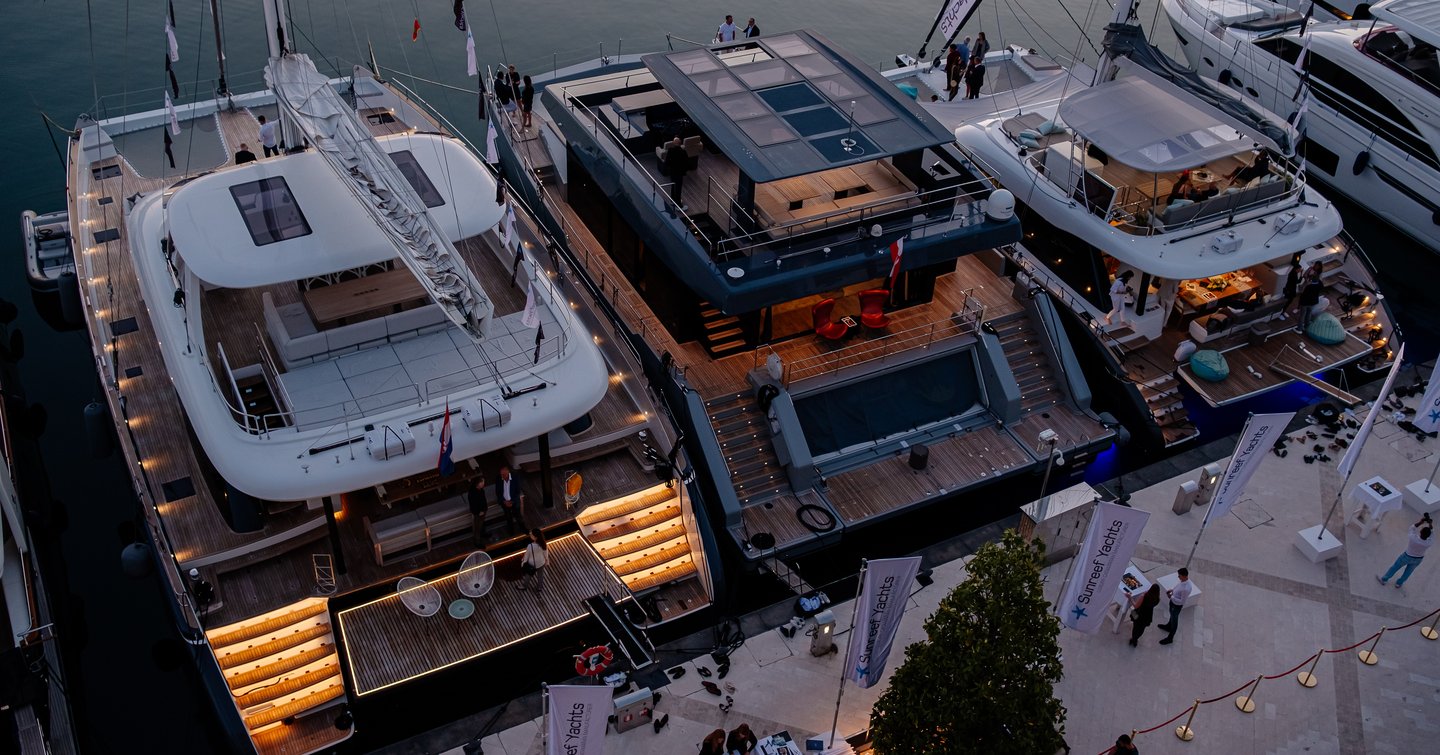
- Displacement hulls are most stable at very slow speeds. In tight spaces, their stable nature can be an advantage, as they tend to hold their course predictably. However, they may have limited maneuverability, and turning or stopping can be relatively slow. Their longer keel can make them less nimble when precise control is required.
- Planing hulls are less manoeuvrable at very slow speeds. In tight spaces, they might feel less responsive, making it challenging to make precise manoeuvres.
- Semi-displacement or semi-planing hulls can be more responsive making them more suitable for navigating tight spaces.
- Catamarans generally excel in tight spaces at very slow speeds; they can pivot around their centre point effectively. This makes them highly manoeuvrable and well-suited for navigating in confined areas like marinas, however, their width may be restrictive proceeding into narrow channels.
When you first take the helm it will naturally take time to understand the vessel's specific hull design and how it responds in various situations. Different hulls require different handling techniques, and experience plays an important role in safely navigating in close quarters.
Joystick Control
Joystick control technology has revolutionised the handling of motor yachts. It introduced the ability to intuitively control a yacht's direction at slow speeds with a single, user-friendly joystick. With the touch of a button, a person on the helm can effortlessly manoeuvre these vessels in tight spaces, thanks to advanced thruster systems.

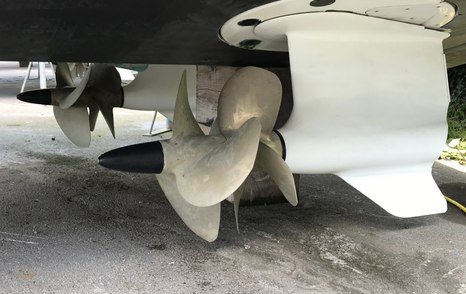
Initially featured on Pod drive yachts, this technology rapidly expanded to include sterndrive and shaft-drive yachts as an optional enhancement, offering yacht operators ease and precision in close-quarters handling.
The Power of Thrusters
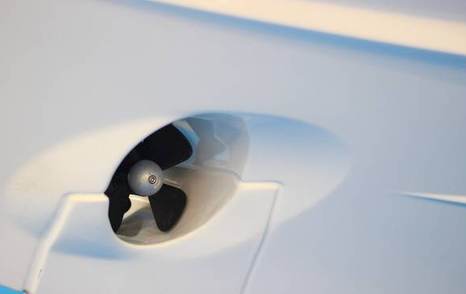
Whether bow or stern-mounted, or both, these auxiliary propulsion systems provide lateral thrust, allowing a yacht to pivot, dock, or navigate with remarkable precision. From hydraulic versions for extended thrust to electric thrusters for brief bursts of power, their versatility caters to various yacht sizes and needs.
The primary difference between hydraulic thrusters and electrically powered thrusters on yachts lies in their propulsion systems and performance characteristics. Yacht size will inevitably determine what is chosen.
Hydraulic thrusters offer sustained thrust and are suitable for larger yachts and extended manoeuvring; they excel in situations where precise control over the yacht's movement is necessary for extended periods.
Electrically powered thrusters are powered by batteries or the yacht's electrical system, providing shorter bursts of thrust, typically around 5-10 seconds, designed for brief and precise manoeuvres.
Local Inshore Waters
Upon leaving the port, you will navigate into inshore waters. These areas, often bustling with marine activity, demand careful navigation. Depths may vary, local navigation marks and regulations may be in place, as well as increased marine traffic, holidaymakers in the water, and even fishing and lobster pots.
Adhering to the International Regulations for the Prevention of Collision at Sea (IRPCS) commonly referred to as the 'rules of the road,' especially in congested waters, is of paramount importance for safe and responsible boating.
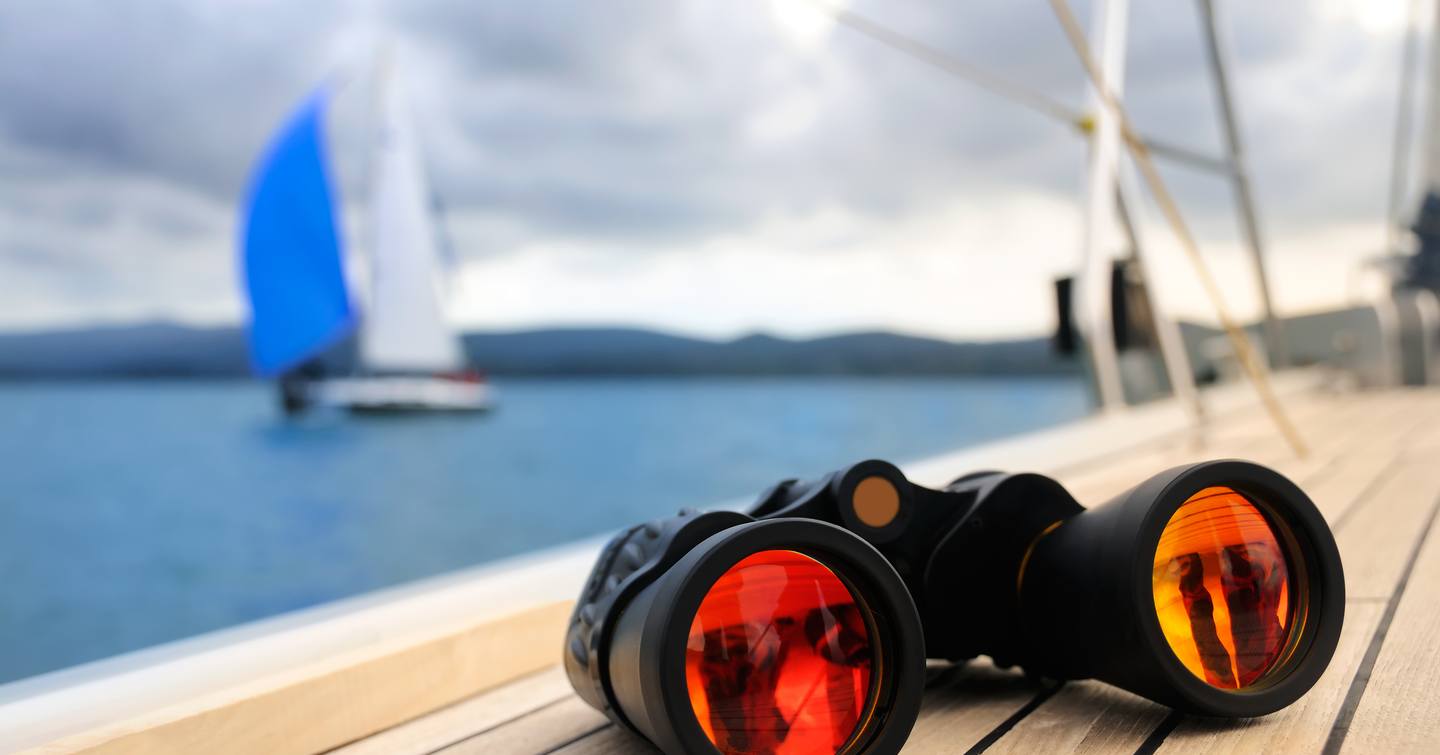
Consideration must be given to other water users; an understanding of the collision regulations and familiarity with the general rules is key to making the correct decisions in a timely manner.
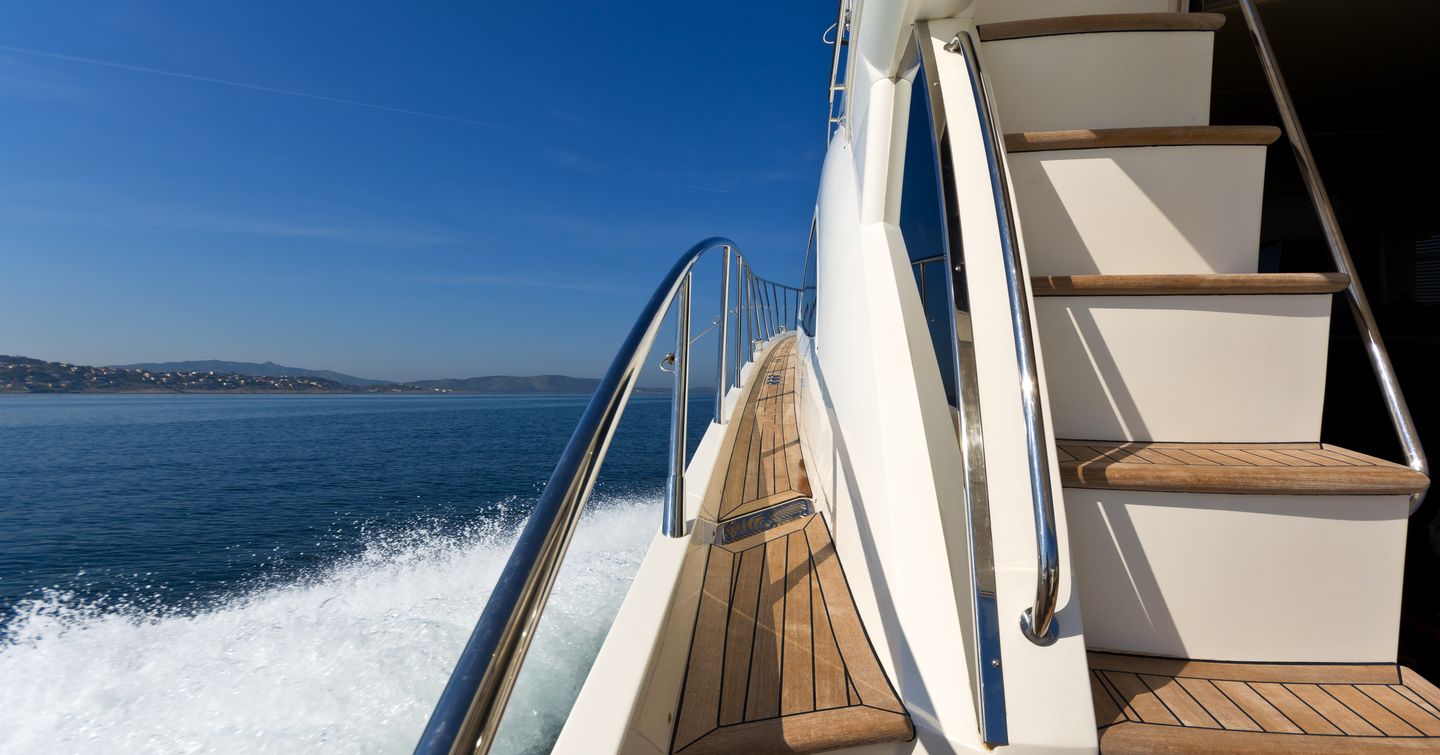
Having left the harbor and ventured beyond speed restrictions into open water, you've thanked your crew for their role in the smooth departure. The yacht is tidy with fenders and lines stowed. You know where you're heading, and, importantly, shore contacts are informed of your route, intended arrival port, and ETA.
Is it time to put the kettle on?
